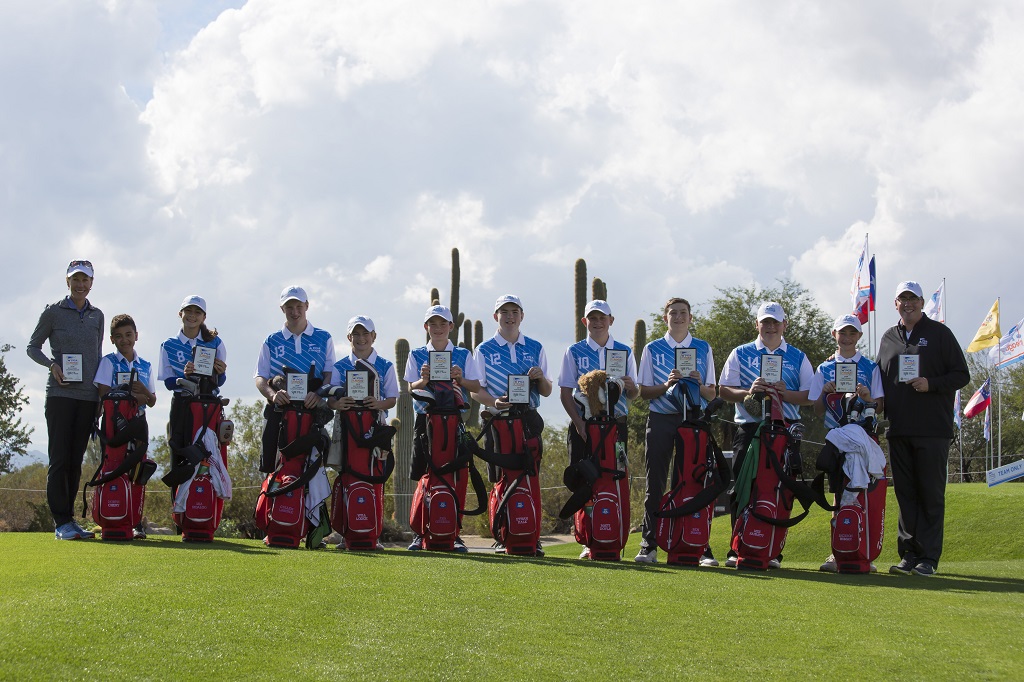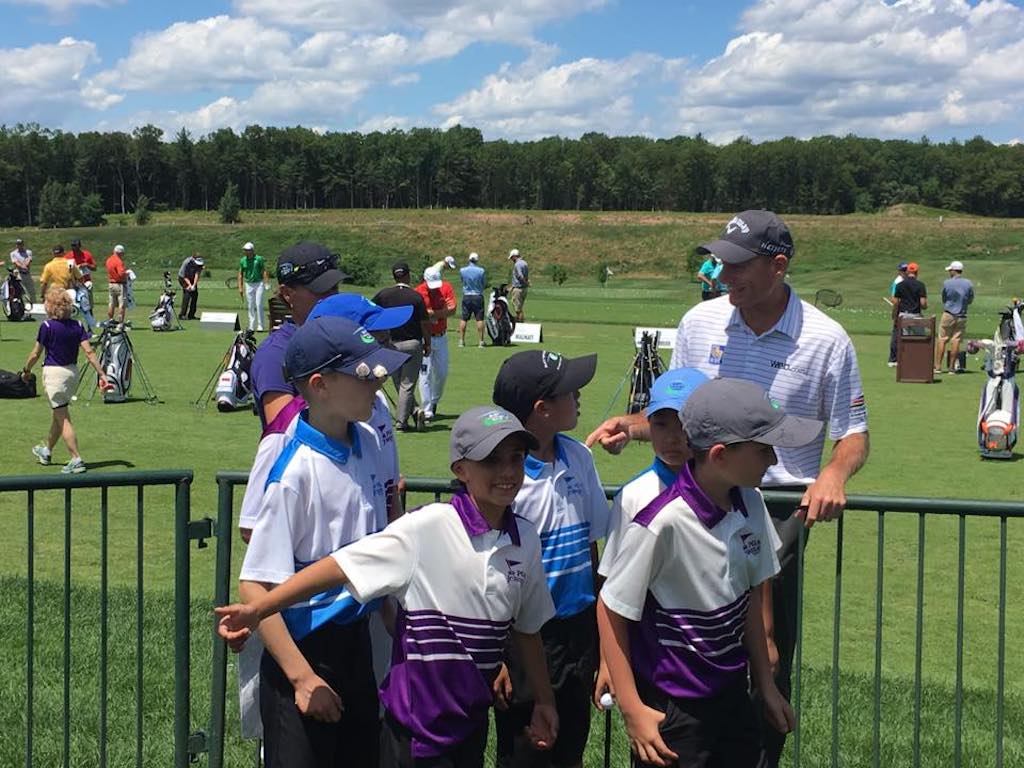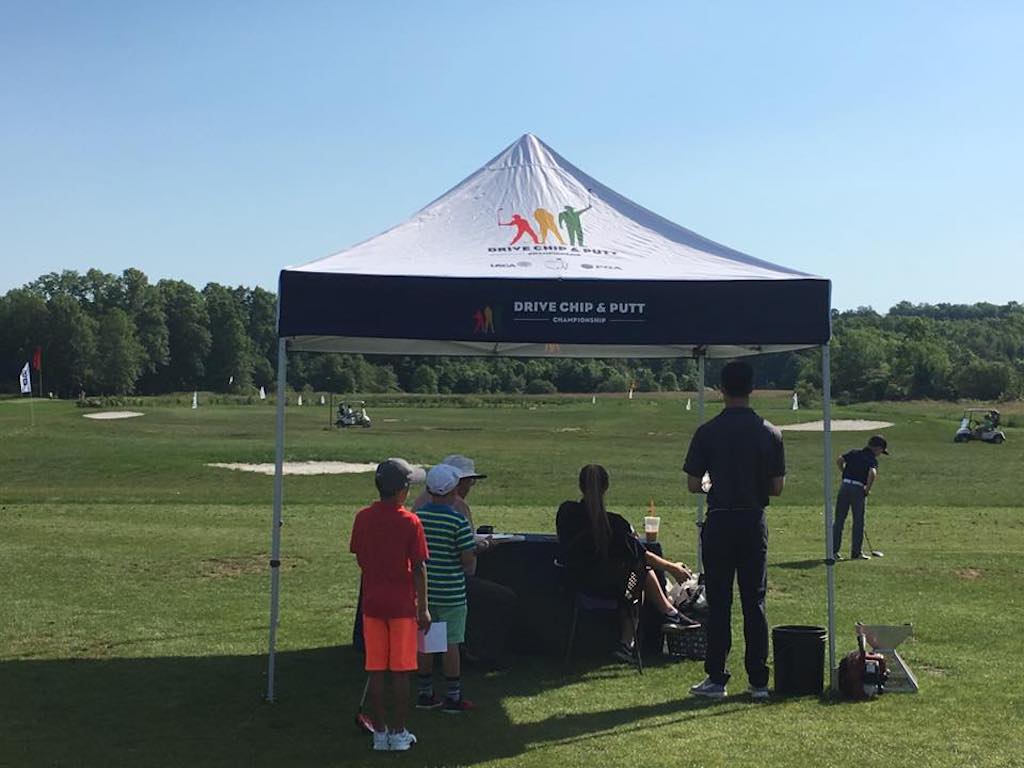Opinion & Analysis
The Kids Are Alright: Spike in Junior Golf Participation a Good Sign for Game’s Future
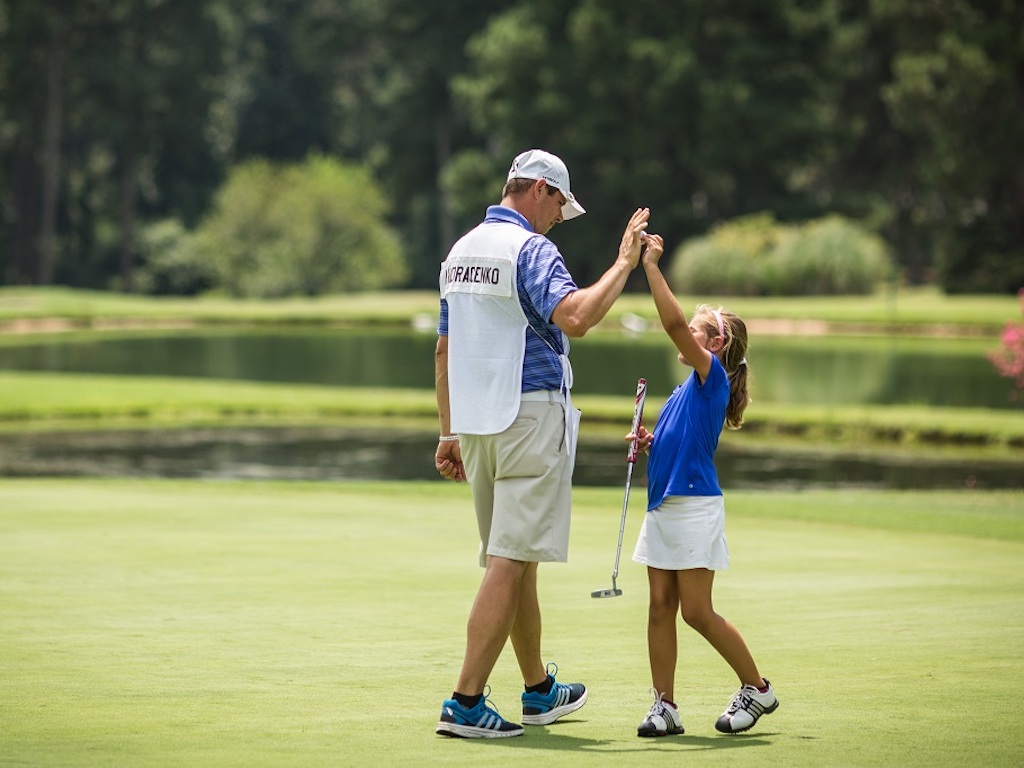
This week, eight 10-player All-Star teams representing regions from across the country will converge upon Grayhawk Golf Club in Scottsdale, Ariz., to compete in the 6th PGA Junior League Championship.
The teams – New Hampshire (Northeast), California (West), Georgia (Southeast), Ohio (Mideast), Illinois (Midwest), New Jersey (Mid-Atlantic), Arkansas (Mississippi Valley), and Texas (Southwest) – will be divided into two divisions where they will face off in round-robin, 9-hole matches using a two-person, scramble format of play. Teams are captained by PGA/LPGA Professionals.
Since the PGA of America launched PGA Junior League in 2012, participation has skyrocketed from about 1,800 players the first year to a record-setting 42,000 boys and girls age 13 and under participating on 3,400 teams across the country this year.
“Junior golf is a key priority of the PGA of America and we recognize that increasing youth participation in the game is essential to the future of our industry and sport,” said Suzy Whaley, PGA of America Vice President and PGA Director of Instruction at Suzy Whaley Golf in Connecticut.
“PGA Jr. League is a fun and welcoming opportunity for boys and girls of all backgrounds and skill levels to learn, play, and love golf under the expert instruction and guidance of PGA and LPGA Professionals. It’s team-oriented and kids wear numbered jerseys. It’s transforming traditional junior golf and the numbers prove it.”
Whaley believes the team concept and scramble format are major factors in PGA Jr. League’s rapid growth over the last five years. In fact, she says, the program is re-shaping the golf industry’s view of the way junior golf is typically learned and played.
“Other youth sports have been utilizing the team format for years and it’s a natural fit for golf,” said Whaley, who has taken three teams to the Jr. League Championships. “The scramble format provides for a low-pressure environment. We’ve created a team atmosphere that has broad appeal. Parents and kids enjoy being a part of the community that PGA/LPGA Professional Captains create. In this team setting, older, more experienced players mentor the younger, beginner golfers. There’s no pressure on any one player, and it’s great to see kids pull for one another versus the individual focus generally associated with golf.”
“It is a program that creates a family-centered atmosphere that encourages mom, dad, brothers, sisters, and grandparents to become involved, as well. During PGA Jr. League matches, the parents are part of the match keeping score, posting photos on social media and encouraging all players. PGA Jr. League grows lifetime interest in the game across multiple generations.”
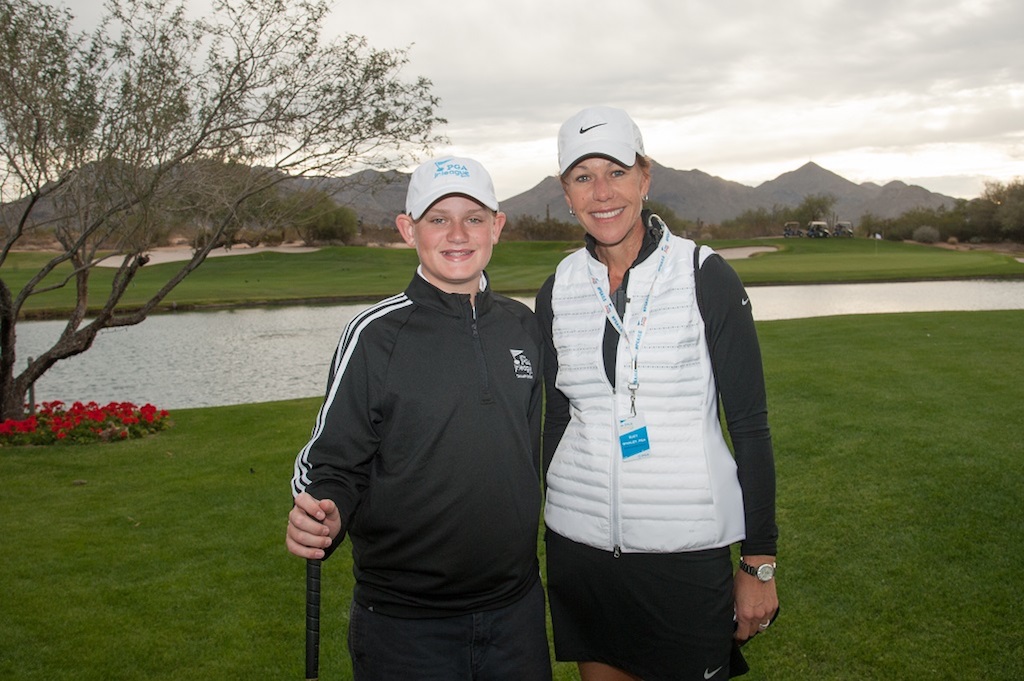
Matthew Doyle of the Connecticut team gathers for a photo with team captain, Suzy Whaley during session three for the 2016 PGA jr. League Golf Championship presented by National Rental Car held at Grayhawk Golf Club on November 20, 2016 in Scottsdale, Arizona. (Photo by Traci Edwards/PGA of America)
Fourteen-year-old Cullen Laberge from Farmington, Conn., is a student in the Suzy Whaley Golf program and has competed at the PGA Jr. League Championships for Team Connecticut. Laberge has been playing for four years and says his Jr. League experience really sparked his interest in the game and his desire to become a better player and ultimately a golf teacher one day.
“It has taught me so much about golf, while keeping it fun and interesting,” Laberge said. “The thing I enjoy the most is playing competitive golf without the stress that tournament golf can sometimes bring. No matter age or skill level, Jr. League keeps it fun and no matter how a player is playing there is another player to pick them up. That national championship was the best experience of my life. It was like I was playing on the PGA Tour. I loved the amazing competition; those players were good.”
And it’s not just golf’s executives and Jr. League participants who have taken notice of the program’s growth and the ultimate importance that growth represents for the future of the game. PGA and LPGA professionals including Rory McIlroy, Ricky Fowler, Lexi Thompson and Michelle Wie have all joined as ambassadors for the program.
“I want to do everything I can to be a positive influence on kids who are interested in the game and serving as an ambassador for PGA Jr. League is a great fit,” said Wie. “There are so many lessons that kids can learn and that adults can reinforce through the game of golf – good sportsmanship, honesty, integrity, work ethic. Golf can help you learn how to react when things don’t go your way which I think is a really important skill to have in life.”
“Golf can definitely mirror life. You can work incredibly hard and still fall short, but how do you bounce back? How do you overcome a mistake or a bad break and still succeed? It’s important for kids to grow up with a good work ethic and the right attitude to face challenges. Golf is a great game to teach those lessons.”
Wie says the more inclusive and welcoming the golf community in general can be, the better.
“Especially as a young female, I have experienced plenty of times where I did not feel welcome or felt like I had to prove myself more than the guys did,” Wie said. “Golf is a game that should be available to everyone and I think it’s important to make it accessible to kids whether they are a future tour pro or a future 20-handicapper.”
The folks over at the USGA know a thing or two about growing the game and making it more accessible and they should, they’ve been doing it since the association’s founding in 1894.
The inaugural three USGA championships – the U.S. Open, U.S. Amateur and U.S. Women’s Amateur in 1895 – did not have age limits, each simply aiming to identify the champion golfer. In 1948, the USGA held the first United States Junior Amateur solely open to players under the age of 18 and just one year later the association conducted the first United States Girls’ Junior Championship.
In addition to helping fund The First Tee, LPGA-USGA Girls Golf, and the Drive, Chip and Putt Championships, the USGA recently introduced its “For the Good of the Game” grant program to promote a more welcoming and accessible game at the local level with millions of dollars offered to local communities to build programs.
“The greatest misperception is accessibility,” says Beth Major, Director of Community Outreach at the USGA. “Two-thirds of all golf courses in America are open to the public. Kids and parents still believe it is a country club sport and we need to change that.”
Founded in 2013 as a joint initiative between the USGA, the Masters Tournament, and the PGA of America, the Drive, Chip and Putt Championship is a free nationwide junior golf competition for boys and girls ages 7-15 aimed at growing the game. Participants who advance through local, sub-regional and regional qualifying earn a place in the National Finals, which is conducted the Sunday before The Masters at Augusta National Golf Club.
Drive, Chip and Putt qualifying is offered in all 50 states and participation in the event has increased each year.
“We have a great partnership with our friends at the PGA of America and the Masters Tournament,” Major said. “Our leaders realized that by pooling our resources at the national level while activating at the local level, we could quickly scale the program and get more kids involved.”
“Going into our sixth year, it is amazing to see how far the program has grown and the entry point we’ve created together to keep our youth engaged. We look forward to continuing to evolve the program to welcome more youth to the sport.”
The USGA, in partnership with the LPGA, the Masters Tournament, the PGA of America, and the PGA TOUR, founded The First Tee in 1997 specifically to answer the call for diversity and inclusion. The program has welcomed millions of new players to the game in the past 20 years by focusing not only on teaching golf skills but life and social skills such as etiquette, honesty, respect, confidence and responsibility.
Founded in 1989, the LPGA-USGA Girls Golf program is aimed at girls ages 6-17 and has played a critical role in not only welcoming girls and women to the game, but perhaps equally importantly keeping them in the game.
“Statistics continually show us that the social aspects of the game drive girls and women to play golf,” Major said. “That sense of camaraderie and building friends greatly outweighs their need to compete at the entry level. LPGA-USGA Girls Golf, quite simply, has made it fun and cool for girls to play – and play together. And the results are astounding. We have traced more than 100 girls who started in an LPGA-USGA Girls Golf program that played in a USGA championship last year. They have not only introduced the game to girls and young women, they kept them in the game, and that is very exciting and inspiring.”
One company is tackling growth of the game from another angle – the equipment side.
Since its very beginning back in 1997, U.S. Kids Golf has been focused on its mission, “To help kids have fun learning the lifelong game of golf and to encourage family interaction that builds lasting memories.”
To that end, the company began developing youth clubs starting out with just three sizes and one product line initially.
“Over time, through watching youth golfers, we came to realize that we were not serving them as well as we would like,” said Dan Van Horn, U.S. Kids Golf founder. “Looking at how the best players in the world – LPGA and PGA Tour – are fit for clubs, we discovered the proportion of their drive length to height was from 60-70 percent. From that we created what we term the ‘2/3 solution.’ Simply put, for every 3 inches a player grows, we offer a set that has a driver that is 2 inches longer.”
Importantly, it is not just the length of the clubs that increase as the player grows but also the overall club weight, grip size and shaft stiffness. At the same time, the loft on woods decreases providing additional distance.
“One of the key benefits of correctly fit clubs that are lightweight is the ability for players to learn a correct and powerful swing at a young age,” Van Horn said. “Clubs that are too long and/or heavy slows the golf swing itself and creates bad habits that are difficult to change later in life.”
Beyond the importance of young golfers needing properly fit equipment, Van Horn believes strongly in the need for juniors to compete in tournament play to facilitate aspirational goals and to measure progress. Going hand in hand with this is proper instruction from coaches who understand how young players learn and develop.
“After a few years of producing equipment, we realized more needed to be done to serve our market so we formed a nonprofit foundation,” Van Horn said. “Immediately we created our World Championship in 2000 so that young golfers would have an aspirational goal, much like the Little League World Series is to baseball players. We also realized that golf professionals and coaches lacked an organized incentive-based learning program to truly engage players in the game so we created one that same year.”
A longtime proponent of having players play from appropriate yardages, U.S. Kids Golf developed the Longleaf Tee System which uses a mathematical formula to “scale” any golf course for up to eight different tee locations per hole so all players have options based upon how far they carry the ball with a driver. Yardages start at 3,200 yards for 18 holes and increase up to Tour distances of 7,400 yards.
“What we need is a focus by all golf facilities and coaches to provide quality, enjoyable experiences to our youth,” Van Horn said. “This means incorporating game-based learning with a measurable, learning program so that players and their parents know how they are progressing. And, of course, shorter tees need to be available so we can get kids on a ‘field’ that fits them like other sports. There’s no question it can be done.”
The National Golf Foundation’s annual report for 2016 revealed that participation in junior golf programs remained steady at 2.9 million likely due in part to the success of the programs mentioned above and others just like them. Importantly, the number of female junior golfers has increased to a third of all participants and the number of non-Caucasion players has risen to a quarter, four times what it was a couple of decades ago.
While time will ultimately judge whether these programs and offerings serve not only to retain current players but continue to attract new ones, the state of junior golf in the country appears strong and on the right track for now.
To Learn More
- PGA Junior League
- The First Tee
- LPGA-USGA Girls Golf
- Drive, Chip and Putt Championships
- U.S. Kids Golf
- LIKE43
- LEGIT34
- WOW1
- LOL0
- IDHT0
- FLOP1
- OB0
- SHANK1
Opinion & Analysis
The Wedge Guy: What really makes a wedge work? Part 2

In my last post, I explained the basic performance dynamics of “smash factor” and “gear effect” as they apply to your wedges and your wedge play success. If you missed that post, you can read it here.
At the end of that post, I promised “part 2” of this discussion of what makes a wedge work the way it does. So, let’s dive into the other two components of any wedge – the shaft and the grip.
It’s long been said that the shaft is “the engine of the golf club.” The shaft (and grip) are your only connection to all the technologies that are packed into the head of any golf club, whether it be a driver, fairway, hybrid, iron, wedge or even putter.
And you cannot ignore those two components of your wedges if your goal is optimizing your performance.
I’ve long been an advocate of what I call a “seamless transition” from your irons into your wedges, so that the feel and performance do not disconnect when you choose a gap wedge, for example, instead of your iron-set-matching “P-club.” In today’s golf equipment marketplace, more and more golfers are making the investment of time and money to experience an iron fitting, going through trial and error and launch monitor measuring to get just the right shaft in their irons.
But then so many of those same golfers just go into a store and choose wedges off the retail display, with no similar science involved at all. And that’s why I see so many golfers with a huge disconnect between their custom-fitted irons, often with lighter and/or softer graphite or light steel shafts . . . and their off-the-rack wedges with the stock stiff steel ‘wedge flex’ shaft common to those stock offerings.
If your wedge shafts are significantly heavier and stiffer than the shafts in your irons, it is physically impossible for you to make the same swing. Period.
To quickly improve your wedge play, one of the first things you can do is have your wedges re-shafted with the same or similar shaft that is in your irons.
There’s another side of that shaft weight equation; if you don’t have the forearm and hand strength of a PGA Tour professional, you simply cannot “handle” the same weight shaft that those guys play to master the myriad of ‘touch shots’ around the greens.
Now, let’s move on to the third and other key component of your wedges – the grips. If those are not similar in shape and feel to the grips on your irons, you have another disconnect. Have your grips checked by a qualified golf club professionals to make sure you are in sync there.
The one caveat to that advice is that I am a proponent of a reduced taper in your wedge grips – putting two to four more layers of tape under the lower hand, or selecting one of the many reduced taper grips on the market. That accomplishes two goals for your scoring.
First, it helps reduce overactive hands in your full and near-full wedge swings. Quiet hands are key to good wedge shots.
And secondly, it provides a more consistent feel of the wedge in your hands as you grip down for those shorter and more delicate shots around the greens. And you should always grip down as you get into those touch shots. I call it “getting closer to your work.”
So, if you will spend as much time selecting the shafts and grips for your wedges as you do choosing the brand, model, and loft of them, your scoring range performance will get better.
More from the Wedge Guy
- The Wedge Guy: What really makes a wedge work? Part 1
- The Wedge Guy: The easiest-to-learn golf basic
- The Wedge Guy: Golf mastery begins with your wedge game
- LIKE4
- LEGIT3
- WOW0
- LOL1
- IDHT1
- FLOP0
- OB0
- SHANK4
19th Hole
Vincenzi’s 2024 Wells Fargo Championship betting preview: Tommy Fleetwood ready to finally land maiden PGA Tour title

The PGA Tour season ramps back up this week for another “signature event,” as golf fans look forward to the year’s second major championship next week.
After two weaker-field events in the Zurich Classic and the CJ Cup Byron Nelson, most of the best players in the world will head to historic Quail Hollow for one of the best non-major tournaments of the year.
Last season, Wyndham Clark won the event by four shots.
Quail Hollow is a par-71 measuring 7,521 yards that features Bermudagrass greens. The tree-lined, parkland style course can play quite difficult and features one of the most difficult three-hole stretches in golf known as “The Green Mile,” which makes up holes 16-18: two mammoth par 4s and a 221-yard par 3. All three holes have an average score over par, and water is in play in each of the last five holes on the course.
The field is excellent this week with 68 golfers teeing it up without a cut. All of the golfers who’ve qualified are set to tee it up, with the exception of Scottie Scheffler, who is expecting the birth of his first child.
Past Winners at Quail Hollow
- 2023: Wyndham Clark (-19)
- 2022: Max Homa (-8)
- 2021: Rory McIlroy (-10)
- 2019: Max Homa (-15)
- 2018: Jason Day (-12)
- 2017: Justin Thomas (-8) (PGA Championship)
- 2016: James Hahn (-9)
- 2015: Rory McIlroy (-21)
Key Stats For Quail Hollow
Strokes Gained: Approach
Strokes gained: Approach will be extremely important this week as second shots at Quail Hollow can be very difficult.
Total SG: Approach Over Past 24 Rounds
- Akshay Bhatia (+1.16)
- Tom Hoge (+1.12)
- Corey Conners (+1.01)
- Shane Lowry (+0.93)
- Austin Eckroat (+0.82)
Strokes Gained: Off the Tee
Quail Hollow is a long course on which it is important to play from the fairway. Both distance and accuracy are important, as shorter tee shots will result in approach shots from 200 or more yards. With most of the holes heavily tree lined, errant drives will create some real trouble for the players.
Strokes Gained: Off the Tee Past 24 Rounds:
- Ludvig Aberg (+0.73)
- Rory McIlroy (+0.69)
- Xander Schauffele (+0.62)
- Viktor Hovland (+0.58)
- Chris Kirk (+0.52)
Proximity: 175-200
The 175-200 range is key at Quail Hollow. Players who can hit their long irons well will rise to the top of the leaderboard.
Proximity: 175-200+ over past 24 rounds:
- Cameron Young (28’2″)
- Akshay Bhatia (29’6″)
- Ludvig Aberg (+30’6″)
- Sam Burns (+30’6″)
- Collin Morikawa (+30’9″)
SG: Total on Tom Fazio Designs
Players who thrive on Tom Fazio designs get a bump for me at Quail Hollow this week.
SG: Total on Tom Fazio Designs over past 36 rounds:
- Patrick Cantlay (+2.10)
- Rory McIlroy (+1.95)
- Tommy Fleetwood (+1.68)
- Austin Eckroat (+1.60)
- Will Zalatoris (+1.57)
Strokes Gained: Putting (Bermudagrass)
Strokes Gained: Putting has historically graded out as the most important statistic at Quail Hollow. While it isn’t always predictable, I do want to have it in the model to bump up golfers who prefer to putt on Bermudagrass.
Strokes Gained: Putting (Bermudagrass) Over Past 24 Rounds:
- Taylor Moore (+0.82)
- Nick Dunlap (+.76)
- Wyndham Clark (+.69)
- Emiliano Grillo (+.64)
- Cam Davis (+.61)
Course History
This stat will incorporate players that have played well in the past at Quail Hollow.
Course History over past 36 rounds (per round):
- Rory McIlroy (+2.50)
- Justin Thomas (+1.96)
- Jason Day (+1.92)
- Rickie Fowler (+1.83)
- Viktor Hovland (+1.78)
Wells Fargo Championship Model Rankings
Below, I’ve compiled overall model rankings using a combination of the five key statistical categories previously discussed — SG: Approach (27%), SG: Off the Tee (23%), SG: Total on Fazio designs (12%), Proximity: 175-200 (12%), SG: Putting Bermuda grass (12%), and Course History (14%).
- Wyndham Clark
- Rory McIlroy
- Xander Schauffele
- Shane Lowry
- Hideki Matsuyama
- Viktor Hovland
- Cameron Young
- Austin Eckroat
- Byeong Hun An
- Justin Thomas
2024 Wells Fargo Championship Picks
Tommy Fleetwood +2500 (DraftKings)
I know many out there have Tommy fatigue when it comes to betting, which is completely understandable given his lack of ability to win on the PGA Tour thus far in his career. However, history has shown us that players with Fleetwood’s talent eventually break though, and I believe for Tommy, it’s just a matter of time.
Fleetwood has been excellent on Tom Fazio designs. Over his past 36 rounds, he ranks 3rd in the field in Strokes Gained: Total on Fazio tracks. He’s also been incredibly reliable off the tee this season. He’s gained strokes in the category in eight of his past nine starts, including at The Masters, the PLAYERS and the three “signature events” of the season. Tommy is a golfer built for tougher courses and can grind it out in difficult conditions.
Last year, Fleetwood was the first-round leader at this event, firing a Thursday 65. He finished the event in a tie for 5th place.
For those worried about Fleetwood’s disappointing start his last time out at Harbour Town, he’s bounced back nicely after plenty of poor outings this season. His T7 at the Valero Texas Open was after a MC and T35 in his prior two starts and his win at the Dubai Invitational came after a T47 at the Sentry.
I expect Tommy to bounce back this week and contend at Quail Hollow.
Justin Thomas +3000 (DraftKings)
It’s been a rough couple of years for Justin Thomas, but I don’t believe things are quite as bad as they seem for JT. He got caught in the bad side of the draw at Augusta for last month’s Masters and has gained strokes on approach in seven of his nine starts in 2024.
Thomas may have found something in his most recent start at the RBC Heritage. He finished T5 at a course that he isn’t the best fit for on paper. He also finally got the putter working and ranked 15th in Strokes Gained: Putting for the week.
The two-time PGA champion captured the first of his two major championships at Quail Hollow back in 2017, and some good vibes from the course may be enough to get JT out of his slump.
Thomas hasn’t won an event in just about two years. However, I still believe that will change soon as he’s been one of the most prolific winners throughout his PGA Tour career. Since 2015, he has 15 PGA Tour wins.
Course history is pretty sticky at Quail Hollow, with players who like the course playing well there on a regular basis. In addition to JT’s PGA Championship win in 2017, he went 4-1 at the 2022 Presidents Cup and finished T14 at the event last year despite being in poor form. Thomas can return as one of the top players on the PGA Tour with a win at a “signature event” this week.
Cameron Young +3500 (DraftKings)
For many golf bettors, it’s been frustrating backing Cam Young this season. His talent is undeniable, and one of the best and most consistent performers on the PGA Tour. He just hasn’t broken through with a victory yet. Quail Hollow has been a great place for elite players to get their first victory. Rory McIlroy, Anthony Kim, Rickie Fowler and Wyndham Clark all notched their first PGA Tour win at Quail.
Throughout Cam Young’s career, he has thrived at tougher courses with strong fields. This season, he finished T16 at Riviera and T9 at Augusta National, demonstrating his preference of a tough test. His ability to hit the ball long and straight off the tee make him an ideal fit for Quail Hollow, despite playing pretty poorly his first time out in 2023 (T59). Young should be comfortable playing in the region as he played his college golf at Wake Forest, which is about an hour’s drive from Quail Hollow.
The 26-year-old has played well at Tom Fazio designs in the past and ranks 8th in the field in Strokes Gained: Total on those courses in his last 36 rounds. Perhaps most importantly, this season, Young is the best player on the PGA Tour in terms of proximity from 175-200 in the fairway, which is where a plurality and many crucial shots will come from this week.
Young is an elite talent and Quail Hollow has been kind to players of his ilk who’ve yet to win on Tour.
Byeong Hun An +5000 (FanDuel)
Byeong Hun An missed some opportunities last weekend at the CJ Cup Byron Nelson. He finished T4 and played some outstanding golf, but a couple of missed short putts prevented him from getting to the winning score of -23. Despite not getting the win, it’s hard to view An’s performance as anything other than an overwhelming success. It was An’s fourth top-ten finish of the season.
Last week, An gained 6.5 strokes ball striking, which was 7th in the field. He also ranked 12th for Strokes Gained: Approach and 13th for Strokes Gained: Off the Tee. The South Korean has been hitting the ball so well from tee to green all season long and he now heads to a golf course that should reward his precision.
An’s driver and long irons are absolute weapons. At Quail Hollow, players will see plenty of approach shots from the 175-200 range as well as some from 200+. In his past 24 rounds, Ben ranks 3rd in the field in proximity from 175-200 and 12th in proximity from 200+. Playing in an event that will not end up being a “birdie” fest should help An, who can separate from the field with his strong tee to green play. The putter may not always cooperate but getting to -15 is much easier than getting to -23 for elite ball strikers who tend to struggle on the greens.
Winning a “signature event” feels like a tall task for An this week with so many elite players in the field. However, he’s finished T16 at the Genesis Invitational, T16 at The Masters and T8 at the Arnold Palmer Invitational. The 32-year-old’s game has improved drastically this season and I believe he’s ready to get the biggest win of his career.
- LIKE8
- LEGIT4
- WOW1
- LOL1
- IDHT0
- FLOP0
- OB0
- SHANK1
19th Hole
Vincenzi’s LIV Golf Singapore betting preview: Course specialist ready to thrive once again

After another strong showing in Australia, LIV Golf will head to Sentosa Golf Club in Singapore looking to build off of what was undoubtedly their best event to date.
Sentosa Golf Club sits on the southern tip of Singapore and is one of the most beautiful courses in the world. The course is more than just incredible scenically; it was also rated 55th in Golf Digest’s top-100 courses in 2022-2023 and has been consistently regarded as one of the best courses in Asia. Prior to being part of the LIV rotation, the course hosted the Singapore Open every year since 2005.
Sentosa Golf Club is a par 71 measuring 7,406 yards. The course will require precise ball striking and some length off the tee. It’s possible to go low due to the pristine conditions, but there are also plenty of hazards and difficult spots on the course that can bring double bogey into play in a hurry. The Bermudagrass greens are perfectly manicured, and the course has spent millions on the sub-air system to keep the greens rolling fast. I spoke to Asian Tour player, Travis Smyth, who described the greens as “the best [he’s] ever played.”
Davis Love III, who competed in a Singapore Open in 2019, also gushed over the condition of the golf course.
“I love the greens. They are fabulous,” the 21-time PGA Tour winner said.
Love III also spoke about other aspects of the golf course.
“The greens are great; the fairways are perfect. It is a wonderful course, and it’s tricky off the tee.”
“It’s a long golf course, and you get some long iron shots. It takes somebody hitting it great to hit every green even though they are big.”
As Love III said, the course can be difficult off the tee due to the length of the course and the trouble looming around every corner. It will take a terrific ball striking week to win at Sentosa Golf Club.
In his pre-tournament press conference last season, Phil Mickelson echoed many of the same sentiments.
“To play Sentosa effectively, you’re going to have a lot of shots from 160 to 210, a lot of full 6-, 7-, 8-iron shots, and you need to hit those really well and you need to drive the ball well.”
Golfers who excel from tee to green and can dial in their longer irons will have a massive advantage this week.
Stat Leaders at LIV Golf Adelaide:
Fairways Hit
1.) Louis Oosthuizen
2.) Anirban Lahiri
3.) Jon Rahm
4.) Brendan Steele
5.) Cameron Tringale
Greens in Regulation
1.) Brooks Koepka
2.) Brendan Steele
3.) Dean Burmester
4.) Cameron Tringale
5.) Anirban Lahiri
Birdies Made
1.) Brendan Steele
2.) Dean Burmester
3.) Thomas Pieters
4.) Patrick Reed
5.) Carlos Ortiz
LIV Golf Individual Standings:
1.) Joaquin Niemann
2.) Jon Rahm
3.) Dean Burmester
4.) Louis Oosthuizen
5.) Abraham Ancer
LIV Golf Team Standings:
1.) Crushers
2.) Legion XIII
3.) Torque
4.) Stinger GC
5.) Ripper GC
LIV Golf Singapore Picks
Sergio Garcia +3000 (DraftKings)
Sergio Garcia is no stranger to Sentosa Golf Club. The Spaniard won the Singapore Open in 2018 by five strokes and lost in a playoff at LIV Singapore last year to scorching hot Talor Gooch. Looking at the course setup, it’s no surprise that a player like Sergio has played incredible golf here. He’s long off the tee and is one of the better long iron players in the world when he’s in form. Garcia is also statistically a much better putter on Bermudagrass than he is on other putting surfaces. He’s putt extremely well on Sentosa’s incredibly pure green complexes.
This season, Garcia has two runner-up finishes, both of them being playoff losses. Both El Camaleon and Doral are courses he’s had success at in his career. The Spaniard is a player who plays well at his tracks, and Sentosa is one of them. I believe Sergio will get himself in the mix this week. Hopefully the third time is a charm in Singapore.
Paul Casey +3300 (FanDuel)
Paul Casey is in the midst of one of his best seasons in the five years or so. The results recently have been up and down, but he’s shown that when he’s on a golf course that suits his game, he’s amongst the contenders.
This season, Casey has finishes of T5 (LIV Las Vegas), T2 (LIV Hong Kong), and a 6th at the Singapore Classic on the DP World Tour. At his best, the Englishman is one of the best long iron players in the world, which makes him a strong fit for Sentosa. Despite being in poor form last season, he was able to fire a Sunday 63, which shows he can low here at the course.
It’s been three years since Casey has won a tournament (Omega Dubai Desert Classic in 2021), but he’s been one of the top players on LIV this season and I think he can get it done at some point this season.
Mito Pereira +5000 (Bet365)
Since Mito Pereira’s unfortunate demise at the 2022 PGA Championship, he’s been extremely inconsistent. However, over the past few months, the Chilean has played well on the International Series as well as his most recent LIV start. Mito finished 8th at LIV Adelaide, which was his best LIV finish this season.
Last year, Pereira finished 5th at LIV Singapore, shooting fantastic rounds of 67-66-66. It makes sense why Mito would like Sentosa, as preeminent ball strikers tend to rise to the challenge of the golf course. He’s a great long iron player who is long and straight off the tee.
Mito has some experience playing in Asia and is one of the most talented players on LIV who’s yet to get in the winner’s circle. I have questions about whether or not he can come through once in contention, but if he gets there, I’m happy to roll the dice.
Andy Ogletree +15000 (DraftKings)
Andy Ogletree is a player I expected to have a strong 2024 but struggled early in his first full season on LIV. After failing to crack the top-25 in any LIV event this year, the former U.S. Amateur champion finally figured things out, finished in a tie for 3rd at LIV Adelaide.
Ogletree should be incredible comfortable playing in Singapore. He won the International Series Qatar last year and finished T3 at the International Series Singapore. The 26-year-old was arguably the best player on the Asian Tour in 2023 and has been fantastic in the continent over the past 18 months.
If Ogletree has indeed found form, he looks to be an amazing value at triple-digit odds.
- LIKE3
- LEGIT3
- WOW1
- LOL2
- IDHT0
- FLOP2
- OB0
- SHANK0
-

 19th Hole3 weeks ago
19th Hole3 weeks agoJustin Thomas on the equipment choice of Scottie Scheffler that he thinks is ‘weird’
-

 19th Hole3 weeks ago
19th Hole3 weeks ago‘Absolutely crazy’ – Major champ lays into Patrick Cantlay over his decision on final hole of RBC Heritage
-

 19th Hole2 weeks ago
19th Hole2 weeks agoLET pro gives detailed financial breakdown of first week on tour…and the net result may shock you
-

 19th Hole4 days ago
19th Hole4 days agoReport: LIV star turns down PGA Championship invite due to ‘personal commitments’
-

 19th Hole1 week ago
19th Hole1 week agoGary Player claims this is what ‘completely ruined’ Tiger Woods’ career
-

 Equipment3 days ago
Equipment3 days agoDetails on Justin Thomas’ driver switch at the Wells Fargo Championship
-

 Whats in the Bag2 weeks ago
Whats in the Bag2 weeks agoTeam McIlowry (Rory McIlroy, Shane Lowry) winning WITBs: 2024 Zurich Classic
-

 Whats in the Bag4 days ago
Whats in the Bag4 days agoKeegan Bradley WITB 2024 (May)

